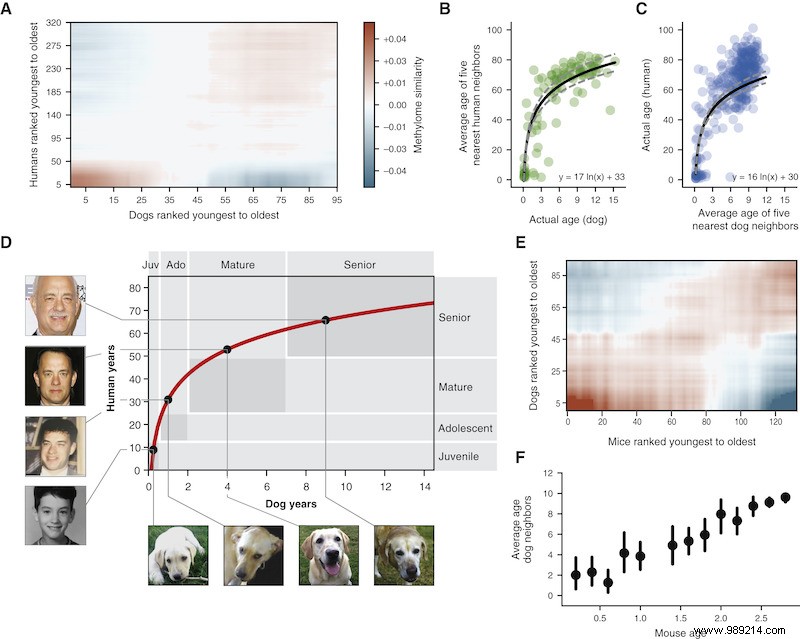How old is your dog in human years? According to the well-known “rule”, one dog year is the equivalent of 7 years. Now, scientists say it's wrong. Dogs are much older than we think, and researchers have come up with a more accurate formula to calculate a dog's age based on the chemical changes in DNA as organisms age.
Dogs share the same environment as their owners and receive almost the same standard of care as humans, offering scientists a unique opportunity to understand aging across species. Like humans, dogs follow similar developmental pathways that cause them to turn gray and become more susceptible to age-related diseases over time. However, how they age at the molecular level is more complicated:aging quickly at first and slowing down later in life.
“In terms of how physiologically mature a 1 year old dog is, a 9 month old dog can have puppies. You know right away that if you're doing the math, you're not doing it seven times," said senior author Trey Ideker of the University of California, San Diego. "What's surprising is exactly how old that one-year-old dog is – it's like a 30-year-old human."
Human and canine DNA, which encodes who we are, doesn't change much over the course of life, but chemical markers on DNA, called methylation markers, do. Ideker sees these traces as wrinkles in the genome. “I tend to think a lot about it when you look at someone's face and guess their age based on their wrinkles, gray hair, and other features,” he says. “These are comparable characteristics at the molecular level.”
The researchers studied 104 Labrador retrievers ranging from a few week old puppies to 16-year-old dogs with the help of two canine experts, Danika Bannasch of the University of California, Davis, and Elaine Ostrander of the National Institutes of Health. They compared the changes in the methylation pattern with humans.
The comparison revealed a new formula that more closely matches the life stage between dogs and humans:human age =16 ln (dog age) + 31. Based on the new feature, an 8 week old dog is approximately 9 months old. baby, both in the baby stage where puppies and babies are developing teeth. The average life expectancy of 12 years of Labrador retrievers also corresponds to the global life expectancy of humans, 70 years.

“I like to take my dogs for a run, which is why I now feel a little more sympathetic to the 6-year-old,” says Ideker, who realized his dog is 60 under the new calculation.
In both species, they found that the age-directed methylation largely occurs in developmental genes that are warmly lit to create body plans in the womb and regulate child development. By the time a person matures and stops growing, "you've largely shut down these genes, but they're still smoldering," Ideker says. “If you look at the methylation markers on those developmental genes, they still change.”
Focusing on the smoldering developmental genes, the team developed a clock that can measure the age and physiological states of several species, while other methylation-quantifying age-predicting methods only work well in one species. Ideker also noted that future research in different dog breeds with different lifespans could provide more insight into the new clock. Not only can the clock serve as a tool to understand aging between species, but it can also be applied as a clinical practice for veterinarians to take proactive measures to treat animals.